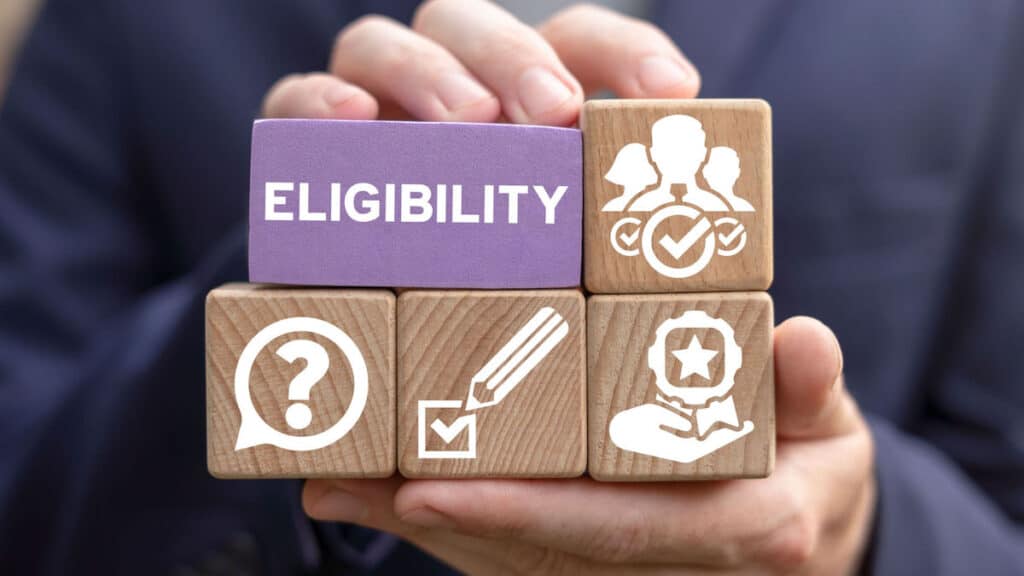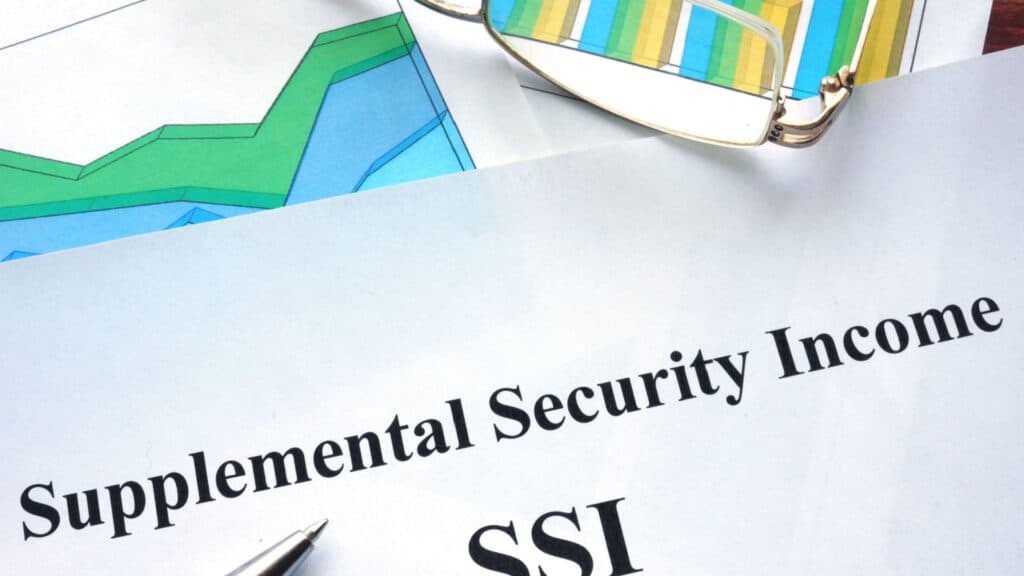Are you wondering if your child with a disability qualifies for social security benefits? Many people know that SSI, or Supplemental Security Income, is a federal program that helps support people 65 or older. But SSI also supports children (and adults of any age) who have disabilities. This article will tell you what to know when you are applying for either a child or an adult.
What you need to know about SSI
SSI is a program that sends a monthly cash benefit to people who qualify. SSI helps pay for basic needs like food, clothes, and housing.
People who qualify for SSI can also automatically qualify for other government benefits like Medicaid and discounted home internet access and devices.
Beginning in January 2025, people who get SSI can get up to $967 each month (if they are single) and $1,450 for a married person if they and their spouse both qualify. These amounts are updated each year.
How do I know if my child qualifies for social security benefits?
This is a complicated process! The only way to know for sure is to talk with someone at the SSA (Social Security Administration) about the process and your situation. But we here’s what to know to get started.
Qualifying for SSI depends on 3 different factors:
- Disability: there are specific criteria, which are different for children and adults
- Income: must be below a certain limit
- Resources: the value of things you own must be below a certain limit (like bank savings or second homes or cars)
There is one set of rules for children and another set for adults beginning at age 18 when a person becomes a legal adult.
How does the SSA decide who is eligible?
Here are the eligibility rules for people who are 17 or younger.
(Read the eligibility rules for people who are 18 or older)
1. Disability requirements:
The SSA considers children 17 or younger to be “disabled” if:
- They have one or more physical or mental impairments that seriously limit their activities, AND
- The impairment has lasted (or will last) for at least 12 months or will result in death. See a list of qualifying conditions
An “impairment” is something about one’s body or mind that is not working the way it should. (We know. We hate this word too). It must be “medically determinable.” This means it is diagnosed by a doctor or other professional. Here’s how to document a disability for the application.
The impairment must affect your child’s ability to reach developmental milestones, or to do age-appropriate activities like walking, talking, or playing.
| The bottom line: A health care provider has to state that your child has a permanent or long-term disability that has a major impact on how they live. |
2. Income requirements:
In order to qualify for SSI, your income must be under the limit SSI sets.
If your child is 17 or younger, they look at family income. Because of this, many people have to wait until their child turns 18 to apply, since your child’s family income no longer counts when they become an adult.
The limit will differ depending on how many parents (including step-parents) live in the household. Income from both step-parents and siblings counts if you live in the same house.
There are situations where it’s easier to qualify because the income limits are higher:
- Your child lives with only 1 parent
- You have more than 1 child with a disability in your household
- Your child is blind
- Your child does not live with you (your income does not count if your child lives in a residential school or similar setting)
| The bottom line: For a child, SSA counts the family income. For an adult, SSA only counts the adult’s income. |
3. Resource requirements
Even if you meet the disability and income qualifications, your family’s resources (meaning anything you own) must be below a certain limit.
Countable resources include things like money in the bank, stocks, and life insurance.
If your child is 17 or younger, there is a process called “deeming” to see how much of the family’s resources count. Since you are caring for your child, a portion of your income and resources will count as your child’s. The SSA deems part of your assets to your child. (Read about countable resources for someone over 18)
This means you can subtract certain amounts from the total, like this:
- For a minor child who lives with one parent, $2,000 of the parent’s total countable resources do not count
- If a minor child lives with 2 parents, $3,000 does not count
- Amounts over the parents’ limit are counted as part of the child’s $2,000 resource limit
Child support on behalf of a child is counted as income to the child, not the family.
Here are some of the things that count as resources:
- Cash savings
- Money in bank accounts
- Real estate (other than the home you live in)
- Second car or other vehicles
- Life insurance
- Stocks and bonds
The SSA does not count everything you own. Here are some of the things that do NOT count:
- The house you live in
- One car or vehicle
- Computers
- Furniture and personal items (like a wedding ring)
- A 529 college savings plan
This list does not include every resource that counts. You’ll have to do the real SSI application to be sure of your total countable resources.
As part of the application process, you must give Social Security permission to contact banks and ask for your financial information.
Here are a few important things to remember about these limits:
These limits are higher if you have more than one child with a disability
If you have more than these amounts in countable resources, your child won’t qualify for SSI, regardless of disability or income.
If your child does not live with you, your resources do not count. Only the child’s own resources count. The limit is $2,000. If they have less than that, they will qualify.
If your resources are above the limit, don’t give up hope. Here’s what you can do.
How does the SSA decide your child qualifies?
| The bottom line: Your child may qualify if your family’s income and savings are under the limit. But if you are over the limit, there are things you can do to help your child qualify. Keep reading! |
Here are the eligibility rules for people who are 18 or older:
1. Disability requirements:
People who are 18 or older are considered “disabled” if:
- They have one or more physical or mental impairments that means that they can’t perform substantial gainful activity, AND
- The impairment has lasted (or will last) for at least 12 months or will result in death. Here’s a list of qualifying conditions
“Substantial gainful activity” means you are able to work a full-time or part-time job that allows you to earn at least $1,620 per month beginning in January 2025 ($2,700 if you are blind). (This amount changes every year).
2. Income requirements
If your child is 18 or older, they look at their income only. Your family income does not count.
What’s the bottom line?
If the monthly countable income your adult child earns or receives as of January 2025 is less than $1,620 ($2,700 if they are blind), then they are eligible based on income. (These amounts are updated every year.)
The process is a bit like a tax form. Only some kinds of income count, and you will add these up. Then you may subtract (deduct) some things to reduce the total.
The total number you end up with is called your countable income: the amount that counts for deciding SSI. Here’s how the SSA counts your income.
3. Resource requirements
Even if you meet the disability and income qualifications, your resources or your family’s resources (meaning anything you own) must be below a certain limit. This limit is $2,000 for one person and $3,000 for a couple.
Countable resources for an adult include things like money in the bank, stocks, and life insurance.
Here are some of the things that count as resources:
- Cash savings
- Money in bank accounts
- Real estate (other than the home you live in)
- Second car or other vehicles
- Life insurance
- Stocks and bonds
The SSA does not count everything you own. Here are some of the things that do NOT count:
- The house you live in
- One car or vehicle
- Computers
- Furniture and personal items (like a wedding ring)
Two important things to know!
- This list does not include every resource that counts. You’ll have to do the real SSI application to be sure of your total countable resources
As part of the application process, you must give Social Security permission to contact banks and ask for your financial information
If your child with a disability is eligible for SSI, it can be a huge help for your child and your family. It can be a long process to apply, but the sooner you get started, the sooner you can get this support.
If your resources are above the limit, don’t give up hope. Here’s what you can do.
How does Social Security decide if your child qualifies?
Once you’ve submitted all of your application materials to the SSA (Social Security Administration) office, they follow a specific process to see if your child qualifies.
- The field office checks non-medical eligibility. They may ask questions about your child’s age, employment, marital status, citizenship, income, resources, and living arrangements. If you make too much money or have too many resources, you will not qualify. Here’s what to do if you have too many resources.
- The field office sends the case to one of the state’s Disability Determination Services (DDS) offices. This office looks at all of the medical records to see if you/your family member meets the guidelines for being disabled or blind.
If the office can’t decide, they’ll make a plan to get more information from your doctor. This may involve more tests, and is called a Consultative Exam.
They may have questions for you or your family member about how the disability affects their daily life.
In some cases, they may ask for a separate medical exam. SSI will pay for this, not you.
- DDS will make a decision about the disability, then return the case to the field office. The field office will tell you the decision.
If your child qualifies for SSI:
Social Security will calculate the benefit amount and start sending you the monthly checks. You will get a letter called an “award notice.” It will explain:
- When your benefits start
- How much your monthly check will be
- What you need to report to Social Security, like changes in work or health
- When your case will be reviewed
- What to do, and who to contact, if you have any questions
If you get SSI, you also automatically qualify for Medicaid, which is a public health insurance that has good benefits for people with disabilities.
If your child does not qualify for SSI:
You have the right to appeal the decision. SSA keeps your files in the field office in case you decide to appeal.
If the family member is found not disabled at any point, the review stops (unless they are over 65).
How do I appeal an SSI denial?
Learn More:
If you are wondering if your child is eligible for SSI, it’s always worth asking. It’s a lot of work, but if your child qualifies it can be a huge source of support.
- What’s the difference between SSI and SSDI?
- Understanding SSI if you are disabled or blind
- SSA’s sequential evaluation process
This content was reviewed for accuracy by Karen B. Mariscal, Esq. www.Kmariscallaw.com



